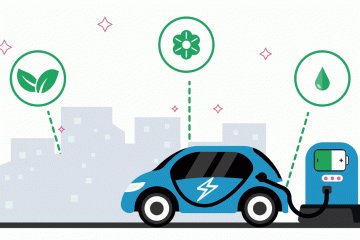There is no denying the fact that pollution is on the rise in India. While we can monitor and keep a check on the air we breathe, the issue still remains. As winter approaches, the pollution levels keep increasing at an alarming rate making both the kids and elders vulnerable to a host of respiratory ailments. We might not be able to do much about pollution control, but we can surely protect our family from constant exposure to airborne particulate matter and toxic pollutants by investing in face masks.
Face masks help you in filtering out the harmful pollutants and minimize your exposure to air pollution. The best part is that it is portable, cost-effective and an inexpensive means to protect yourself against air pollution. But since the pollution levels are not standardized across cities and the pollutants also differ from place to place, we need to know what to look for in a pollution mask.
However, before we go there, let us look at the available options. For the uninitiated like me, who have been surviving with a dupatta or handkerchief tied around the nose, we sure have a lot of choices to look at!
Surgical Masks: When pollution levels start soaring, we see many kids and adults wearing a surgical mask. If you have minimal exposure to traffic and are going to be confined in an indoor space for the best part of the day, this can surely be a better alternative to handkerchiefs and dupattas! Although designed for medical procedures and surgeries, these masks can help you ward off smoke and dust. However, it does very less to protect you from particulate matter and finer pollutants.
Respiratory Masks: This is where the real confusion begins! While a surgical mask will just provide you with basic protection against pollution, respiratory masks can help filter finer and minute particles along with toxic gases. But we have a lot of choices when it comes to respiratory masks. While a basic disposable one may cost you something around INR 170-180, re-usable variants with better filters may go up to INR 2000. We have the luxury of choosing a disposable one or a re-usable one depending on how much you are ready to invest on. Also, depending on the pollution levels and the kind of pollutants your city has, you can choose from N99, N100, P95, and R95 respiratory masks (we would delve into each of these on a different blog!)
But how does one determine which mask would work for them? The answer is simple: Analyze the
air quality data in your area and determine the kind of pollutants that you need protection from. Invest in an air quality monitor that can help you determine the kind of pollutants you are exposed to every day.
- Look out for branded ones which have good reviews and higher levels of filter technology.
- A pollution mask can help you only if it fits snugly on your face. Almost all the branded ones nowadays come in two or three sizes for a comfort fit. If you are buying for your kid, but only those designed specifically for kids.
- Check for air circulation. You don’t want to feel suffocated when you wear your mask right? If you have to wear your mask for a longer duration, it makes sense to ensure it is comfortable and has a good exhaust system.
- Check if it has an adjustable nose clip to keep the mask in its place.
- Check if it has N99, NIOSH/ EN, FFP3, or N95 printed on it. These are the ones that can actually protect you from particulate matter.
- If in doubt, going for a renowned brand helps. Brands like 3M, Vogmask, Honeywell, Dettol, Respro have masks in different sizes and have specially designed ones for kids as well.
You can’t carry an air purifier everywhere you go, and the best way to protect yourself and your loved ones are by investing in an air pollution mask. Check out our
blog section for more information on these respiratory masks.
Follow this link to check out our
air quality monitors and order now. Also available on

.
 .
.




